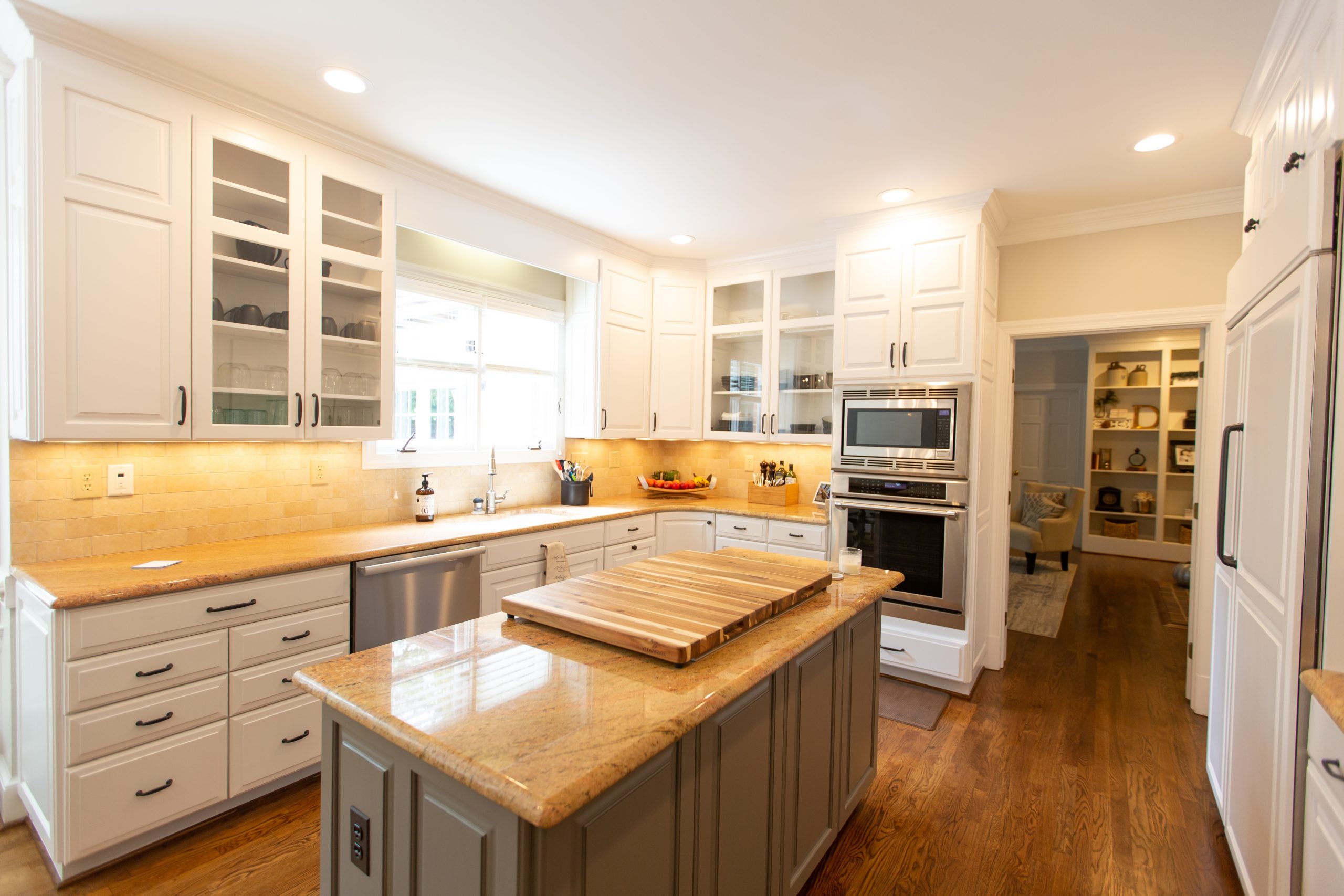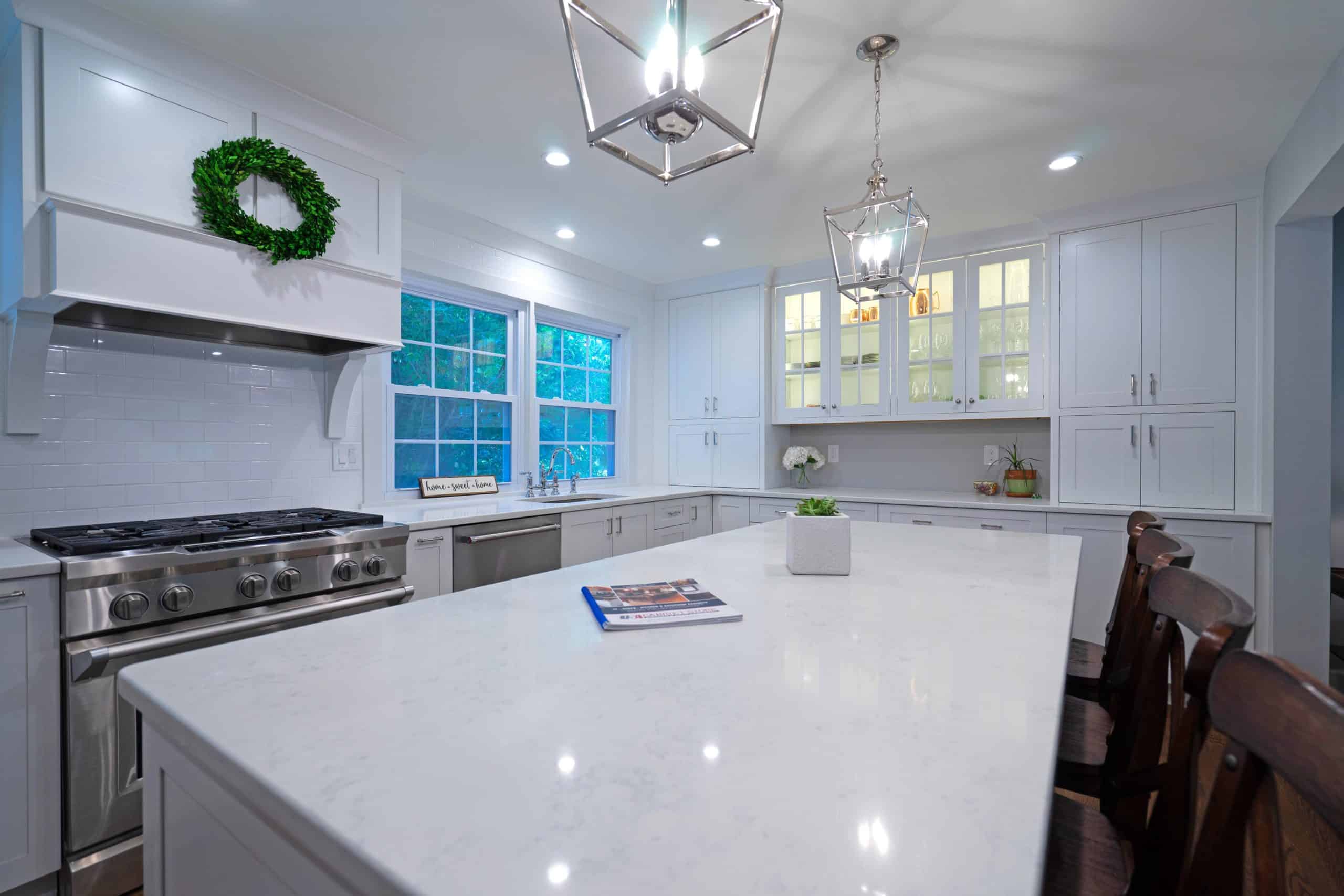Finding the Right Painter in Northern Virginia

Choosing the right painter for your Northern Virginia kitchen cabinet painting project is crucial for a successful outcome. Careful consideration of various factors, including pricing, service guarantees, and the contractor’s experience, will ensure a smooth and satisfactory renovation. This guide provides a framework for navigating this process.
Comparing Northern Virginia Kitchen Cabinet Painting Companies
Three prominent Northern Virginia kitchen cabinet painting companies offer distinct services and pricing structures. Company A, a large established firm, typically charges between $5,000 and $10,000 for a standard kitchen, offering a two-year warranty on their work and a comprehensive, multi-step process including detailed sanding and priming. Company B, a mid-sized company, provides a more streamlined service at a lower price point ($3,500-$7,000), with a one-year warranty and a focus on efficiency. Finally, Company C, an independent contractor, offers personalized service with prices ranging from $2,500 to $6,000, but their warranty may vary depending on the specifics of the contract. Each company employs different techniques and uses different materials, influencing the final cost and longevity of the paint job.
Obtaining Accurate Painting Quotes
To receive accurate quotes from different painting contractors, detailed information is essential. This includes precise measurements of the kitchen cabinets, the number of doors and drawers, the desired paint type and finish (e.g., semi-gloss, matte), and any special requests, such as unique color matching or additional prep work like cabinet hardware removal and reinstalling. Providing high-quality photographs of the cabinets is also beneficial. Clear communication regarding the scope of work is vital to prevent misunderstandings and ensure a fair price. For example, specifying whether you want existing hardware refinished or replaced will significantly affect the final cost.
Independent Contractors vs. Established Companies, Kitchen cabinet painting northern virginia
| Company Type | Advantages | Disadvantages | Cost Range |
|---|---|---|---|
| Established Painting Company | Established reputation, insurance coverage, often larger teams for faster completion, established processes and warranties. | Higher overhead costs leading to potentially higher prices, less flexibility in scheduling. | $4,000 – $12,000+ |
| Independent Contractor | Potentially lower prices, greater flexibility and personalized service, direct communication with the painter. | May lack insurance coverage, potentially less experience or inconsistent quality, less established warranty. | $2,500 – $8,000+ |
Preparing for Kitchen Cabinet Painting

Painting your kitchen cabinets can dramatically transform your space, adding value and a fresh, updated look. Proper preparation is crucial for a professional finish that will last. This process involves several key steps, from thorough cleaning to careful priming, all designed to ensure the paint adheres properly and provides a durable, beautiful surface. Failing to adequately prepare your cabinets can lead to peeling, chipping, and an overall unsatisfactory result.
Cabinet Cleaning and Surface Preparation
Thorough cleaning is the foundation of a successful paint job. Dirt, grease, and old finishes will prevent the paint from adhering correctly. This step requires attention to detail and the right cleaning agents.
- Begin by removing all cabinet doors and hardware. This allows for easier access and a more even application of cleaning solutions and paint.
- Mix a solution of warm water and a mild dish soap. Avoid harsh chemicals that could damage the cabinet surfaces. Use a soft sponge or cloth to gently scrub all surfaces, paying special attention to areas prone to grease buildup, such as around handles and knobs.
- Rinse thoroughly with clean water and allow the cabinets to dry completely before proceeding. A completely dry surface is essential for proper adhesion.
- Inspect the cabinets for any damage, such as chips or cracks. Fill these imperfections with wood filler, allowing it to dry completely and sand it smooth.
- Lightly sand all surfaces with fine-grit sandpaper (180-220 grit). This step creates a slightly rough surface that helps the primer and paint adhere better. Sand in the direction of the wood grain to avoid scratches.
- Wipe down the cabinets with a tack cloth to remove any dust or debris from sanding.
Primer Selection and Application
Primer is essential for creating a uniform surface and ensuring the paint adheres properly, especially on previously painted cabinets. It also helps to block stains and provides a better base for the topcoat.
- Choose a high-quality primer specifically designed for cabinets. Oil-based primers offer superior adhesion and stain blocking, while water-based primers are lower in VOCs and easier to clean up.
- Apply the primer using a high-quality brush or roller, ensuring even coverage. Thin coats are better than thick ones to prevent drips and runs. Allow the primer to dry completely according to the manufacturer’s instructions.
- Lightly sand the primed surfaces with fine-grit sandpaper to smooth any imperfections before applying the paint.
Paint Selection for Kitchen Cabinets
The choice of paint significantly impacts the durability, finish, and longevity of your painted cabinets. Several options exist, each with its advantages and disadvantages.
- Acrylic-Alkyd Enamel: This type of paint offers excellent durability, a smooth finish, and good resistance to moisture and scratches. It’s a popular choice for kitchen cabinets due to its hardwearing nature and relative ease of cleaning. Cleanup requires mineral spirits.
- Acrylic Latex: This is a water-based paint that’s easier to clean up with soap and water. It provides a good finish and is relatively durable, although it may not be as hardwearing as acrylic-alkyd enamel. It’s a more environmentally friendly option.
- Milk Paint: This offers a more rustic or vintage look. It is less durable than other options and requires more care and maintenance.
Kitchen Cabinet Painting Timeline
A typical kitchen cabinet painting project can take anywhere from one to three weeks, depending on the size of the kitchen and the level of preparation required. This timeline provides a general estimate:
| Stage | Duration |
|---|---|
| Preparation (cleaning, sanding, repairs) | 1-3 days |
| Priming | 1-2 days (including drying time) |
| Painting (2 coats) | 2-4 days (including drying time) |
| Hardware reinstallation | 1 day |
| Total | 5-10 days |
Post-Painting Care and Maintenance: Kitchen Cabinet Painting Northern Virginia

Proper care after painting your kitchen cabinets is crucial for preserving their beauty and longevity. Just as a well-tended garden flourishes, so too will your newly painted cabinets thrive with the right attention. Neglecting this crucial step can lead to premature wear and tear, diminishing the investment you’ve made in transforming your kitchen. Understanding the drying process and implementing a consistent cleaning regimen are essential components of this post-painting care.
Proper ventilation and sufficient drying time are paramount after painting kitchen cabinets. The paint needs ample time to cure completely, a process that goes beyond simply feeling dry to the touch. Insufficient drying can lead to a sticky surface, susceptibility to scratches, and an uneven finish. Imagine a freshly baked cake – you wouldn’t frost it immediately, would you? Similarly, rushing the drying process compromises the final result. Good ventilation helps to accelerate the drying process safely, preventing the buildup of harmful fumes and ensuring a smooth, durable finish. A well-ventilated space, ideally with fans circulating air, allows the paint to dry evenly and prevents the formation of bubbles or imperfections. Consult the paint manufacturer’s instructions for recommended drying times; these vary depending on the type of paint and environmental conditions.
Drying Time and Ventilation
The drying time for painted kitchen cabinets is typically several days, even with good ventilation. Factors such as humidity, temperature, and the type of paint used significantly influence the overall drying process. High humidity can extend drying time considerably, while warmer temperatures generally accelerate it. Oil-based paints, for example, usually require a longer drying time than water-based paints. During this period, it’s essential to keep the kitchen well-ventilated to prevent the accumulation of paint fumes, which can be harmful to your health. Open windows and doors, and consider using fans to circulate the air effectively. Avoid touching the cabinets during this critical period to prevent smudging or marring the freshly applied paint.
Cleaning and Maintaining Painted Kitchen Cabinets
Regular cleaning is vital to maintaining the appearance and longevity of your painted kitchen cabinets. Avoid harsh chemicals and abrasive cleaners that can damage the paint finish. A gentle approach is key. Use a soft, damp cloth or sponge with a mild dish soap solution for regular cleaning. Always wipe the cabinets dry immediately after cleaning to prevent water spots or streaks. For tougher stains, a non-abrasive cleaning paste can be used, but always test it on an inconspicuous area first. Protecting your cabinets from excessive moisture and heat is also crucial. Use coasters under drinks and avoid placing hot pans directly on the cabinet surfaces.
Repairing Damage to Painted Kitchen Cabinets
Despite careful maintenance, damage to painted cabinets can occasionally occur. Understanding how to address these issues effectively will help to preserve their beauty.
- Minor Scratches: Small scratches can often be repaired with touch-up paint. Use a fine-tipped brush to apply the paint carefully, matching the existing color as closely as possible. Allow the paint to dry completely before lightly sanding and polishing the area to blend it seamlessly.
- Chips and Cracks: Larger chips and cracks require more extensive repair. Start by carefully cleaning the damaged area. Use a wood filler to fill the gaps, ensuring a smooth surface. Once dry, sand the area smooth and apply a coat of primer followed by touch-up paint. Finish with a protective clear coat for added durability.
- Water Damage: Water damage can cause the paint to bubble or peel. If the damage is minor, gently scrape away the loose paint and let the area dry completely. Apply a coat of primer and then touch-up paint. If the damage is extensive, you may need to sand the area down and repaint the entire cabinet door or drawer front.
